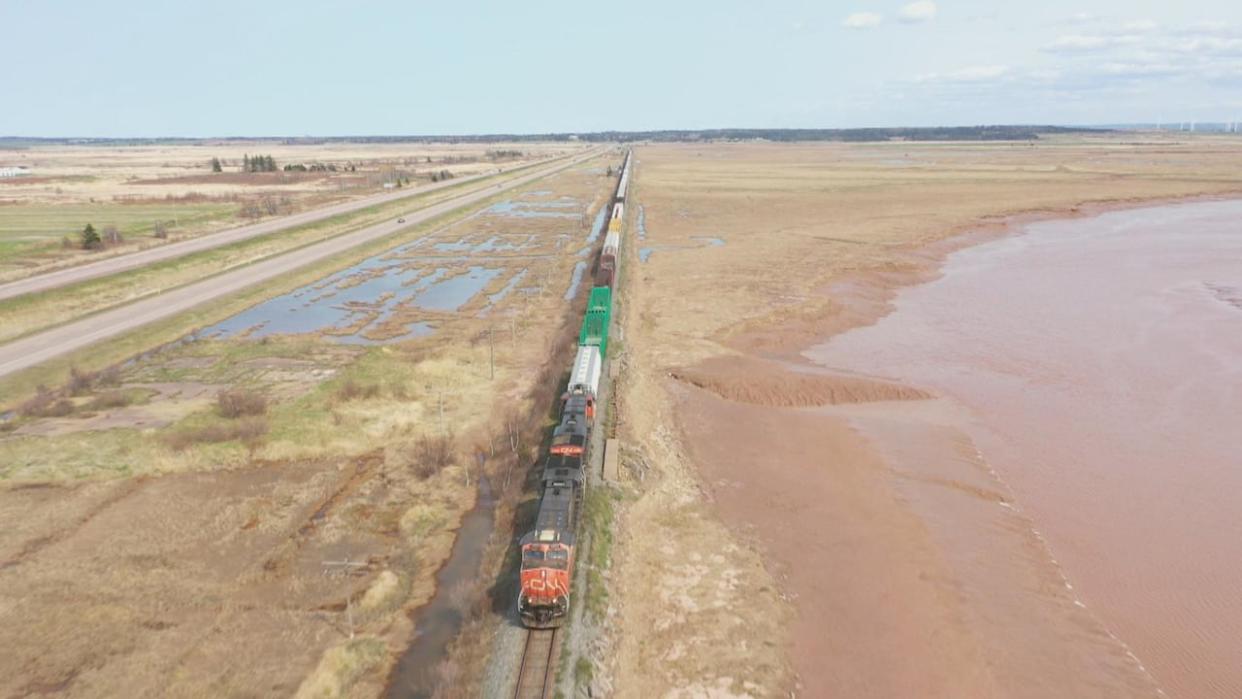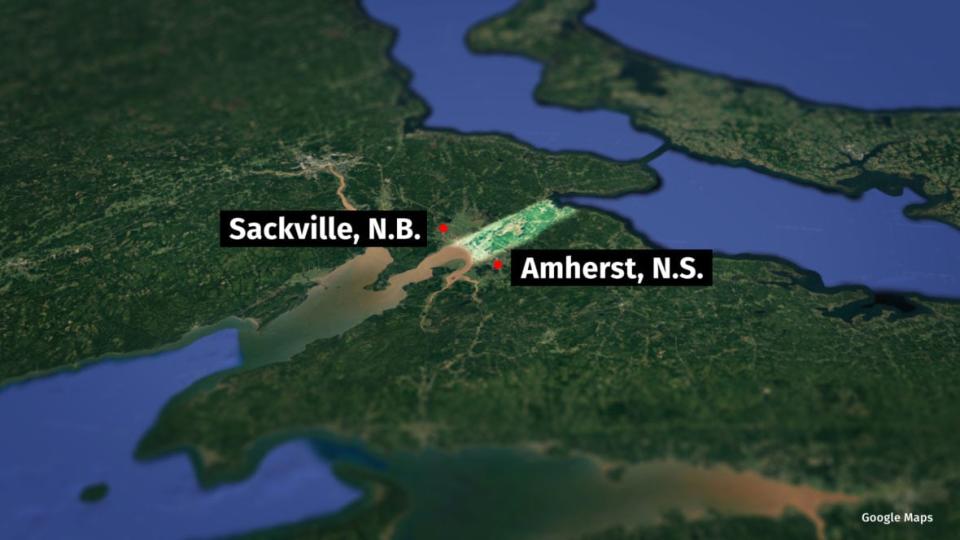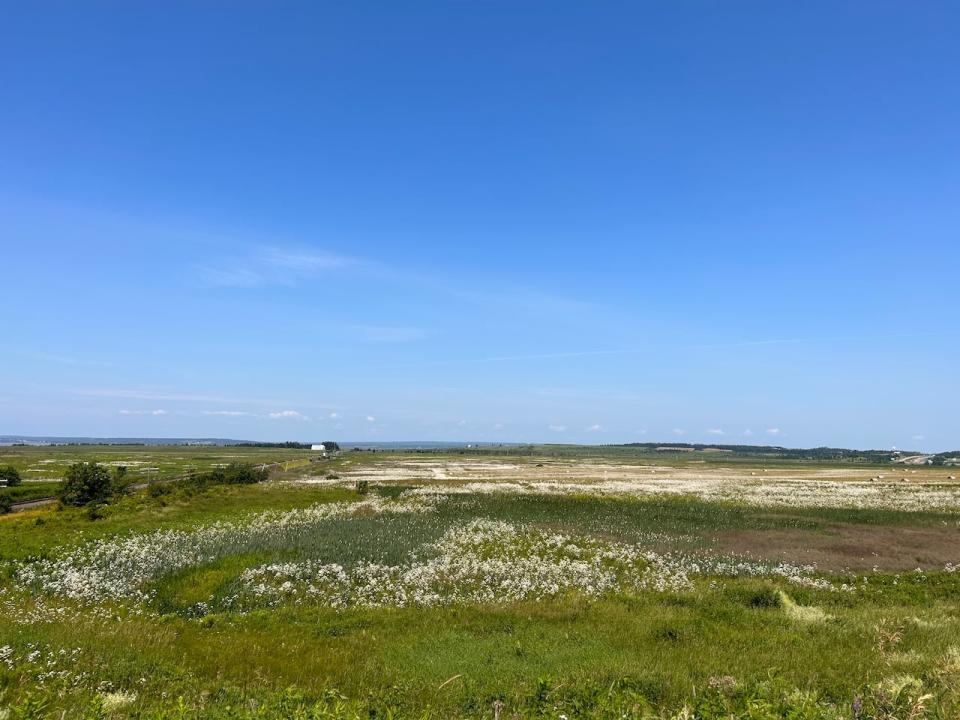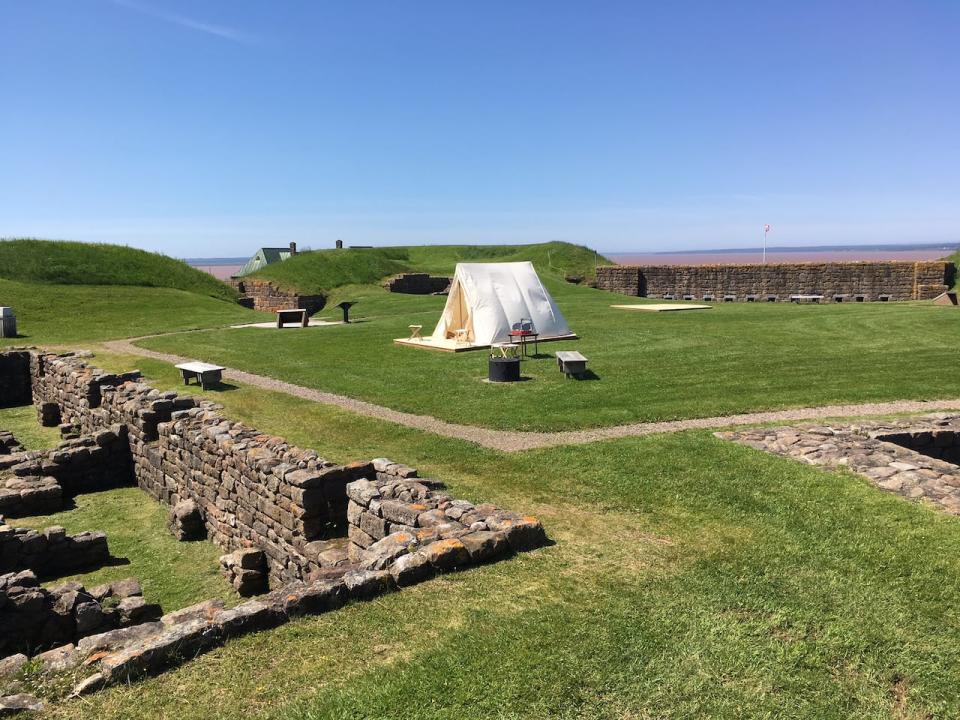Acadian groups want a Chignecto Isthmus national park

A group that represents Acadians in New Brunswick is asking the federal government to turn the Chignecto Isthmus into a national park.
The marshy, low-lying area on the border of New Brunswick and Nova Scotia is important as a transportation link and has historic significance for Acadians and Indigenous people.
The Société de l'Acadie du Nouveau-Brunswick (SANB), along with the Fédération acadienne de la Nouvelle-Écosse and the Société Nationale de l'Acadie, sent a brief to the Canadian Senate standing committee on transport and communications asking for the designation.
"It's the perfect area for a national park to preserve our heritage," said acting SANB president Nicole Arseneau-Sluyter.

The Chignecto Isthmus connects Nova Scotia with the rest of Canada. (CBC News)
The Chignecto Isthmus is a key transportation corridor between New Brunswick and Nova Scotia for both road and rail traffic.
But the low-lying and marshy nature of the area means it's at risk due to climate change and rising sea levels.
"The isthmus is threatened by rising sea levels and more frequent severe weather events," said the March 2022 report from a climate change engineering and feasibility study conducted by the provinces of New Brunswick and Nova Scotia.
The report said the estimated value of goods and services passing through the isthmus is about $35 billion a year.
The Senate committee is currently discussing Bill S-273 — an Act to declare the Chignecto Isthmus Dykeland System and related works to be for the general advantage of Canada, introduced by Independent New Brunswick Senator Jim Quinn.
That bill, if passed, would make the federal government financially responsible for work needed to protect the isthmus.

The low-lying and marshy nature of the area means it's at risk due to climate change and rising sea levels. (Khalil Akhtar/CBC)
The federal government and the provinces have been in a battle to determine who should foot the bill for infrastructure work needed to protect the area.
The bill has already passed first and second reading in the Senate and is now at the committee stage. It would still have to pass third reading before it could move to the House of Commons.
While the bill isn't specifically advocating for a national park, Quinn told Radio-Canada he felt a park would be the best long-term solution.

The area includes several historic sites, including Fort Beauséjour. (Kate Letterick/CBC)
He said the move would protect the area for future generations.
The area already includes several national historic sites including Fort Beauséjour–Fort Cumberland National Historic Site in New Brunswick and Beaubassin and Fort Lawrence National Historic Sites in Nova Scotia.
Arseneau-Sluyter said those sites could partner with a newly created national park.
"The sky is the limit at this point," said Arseneau-Sluyter.
"Everything is on the table to talk about and it's just the beginning of a conversation."


